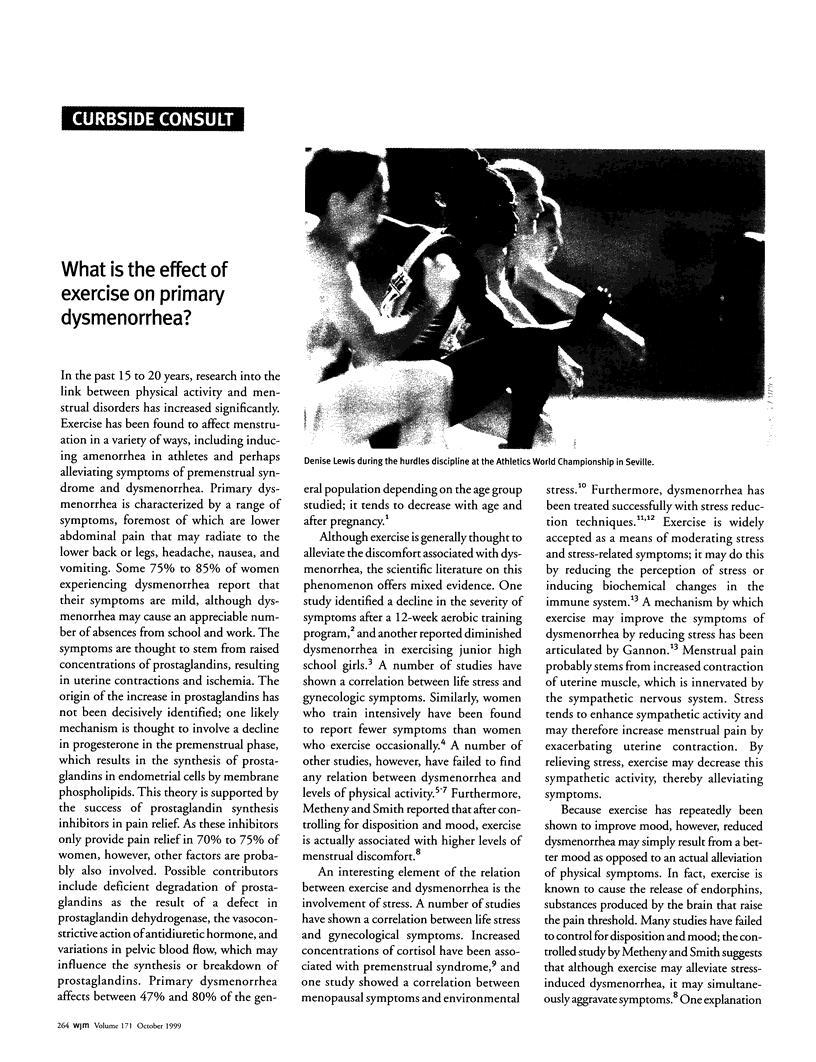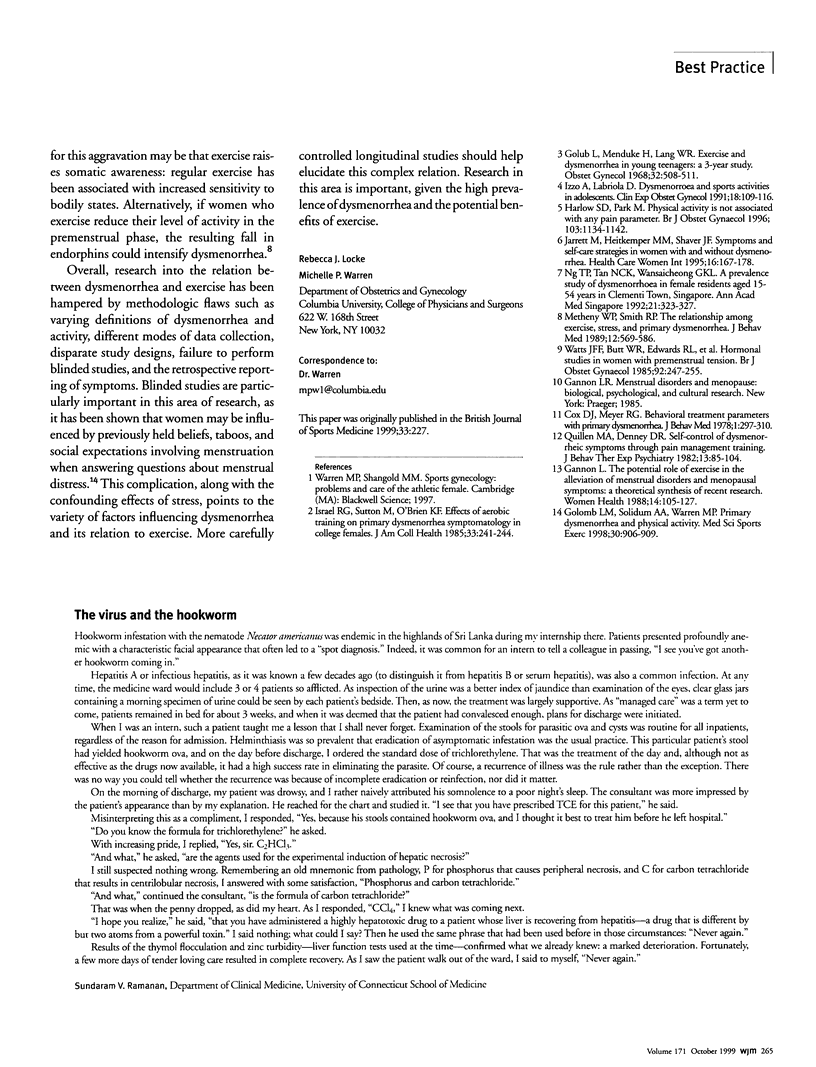Full text
PDF

Images in this article
Selected References
These references are in PubMed. This may not be the complete list of references from this article.
- Cox D. J., Meyer R. G. Behavioral treatment parameters with primary dysmenorrhea. J Behav Med. 1978 Sep;1(3):297–310. doi: 10.1007/BF00846681. [DOI] [PubMed] [Google Scholar]
- Friedin B. D., Borakove L. S., Fox K. T. Treatment of an abnormal avoidance of fluid consumption. J Behav Ther Exp Psychiatry. 1982 Mar;13(1):85–87. doi: 10.1016/0005-7916(82)90041-6. [DOI] [PubMed] [Google Scholar]
- Gannon L. The potential role of exercise in the alleviation of menstrual disorders and menopausal symptoms: a theoretical synthesis of recent research. Women Health. 1988;14(2):105–127. doi: 10.1300/J013v14n02_07. [DOI] [PubMed] [Google Scholar]
- Golomb L. M., Solidum A. A., Warren M. P. Primary dysmenorrhea and physical activity. Med Sci Sports Exerc. 1998 Jun;30(6):906–909. doi: 10.1097/00005768-199806000-00020. [DOI] [PubMed] [Google Scholar]
- Golub L. J., Menduke H., Lang W. R. Exercise and dysmenorrhea in young teenagers: A 3-year study. Obstet Gynecol. 1968 Oct;32(4):508–511. [PubMed] [Google Scholar]
- Harlow S. D., Park M. A longitudinal study of risk factors for the occurrence, duration and severity of menstrual cramps in a cohort of college women. Br J Obstet Gynaecol. 1996 Nov;103(11):1134–1142. doi: 10.1111/j.1471-0528.1996.tb09597.x. [DOI] [PubMed] [Google Scholar]
- Israel R. G., Sutton M., O'Brien K. F. Effects of aerobic training on primary dysmenorrhea symptomatology in college females. J Am Coll Health. 1985 Jun;33(6):241–244. doi: 10.1080/07448481.1985.9935033. [DOI] [PubMed] [Google Scholar]
- Izzo A., Labriola D. Dysmenorrhoea and sports activities in adolescents. Clin Exp Obstet Gynecol. 1991;18(2):109–116. [PubMed] [Google Scholar]
- Jarrett M., Heitkemper M. M., Shaver J. F. Symptoms and self-care strategies in women with and without dysmenorrhea. Health Care Women Int. 1995 Mar-Apr;16(2):167–178. doi: 10.1080/07399339509516167. [DOI] [PubMed] [Google Scholar]
- Metheny W. P., Smith R. P. The relationship among exercise, stress, and primary dysmenorrhea. J Behav Med. 1989 Dec;12(6):569–586. doi: 10.1007/BF00844826. [DOI] [PubMed] [Google Scholar]
- Ng T. P., Tan N. C., Wansaicheong G. K. A prevalence study of dysmenorrhoea in female residents aged 15-54 years in Clementi Town, Singapore. Ann Acad Med Singapore. 1992 May;21(3):323–327. [PubMed] [Google Scholar]
- Watts J. F., Butt W. R., Logan Edwards R., Holder G. Hormonal studies in women with premenstrual tension. Br J Obstet Gynaecol. 1985 Mar;92(3):247–255. doi: 10.1111/j.1471-0528.1985.tb01090.x. [DOI] [PubMed] [Google Scholar]



